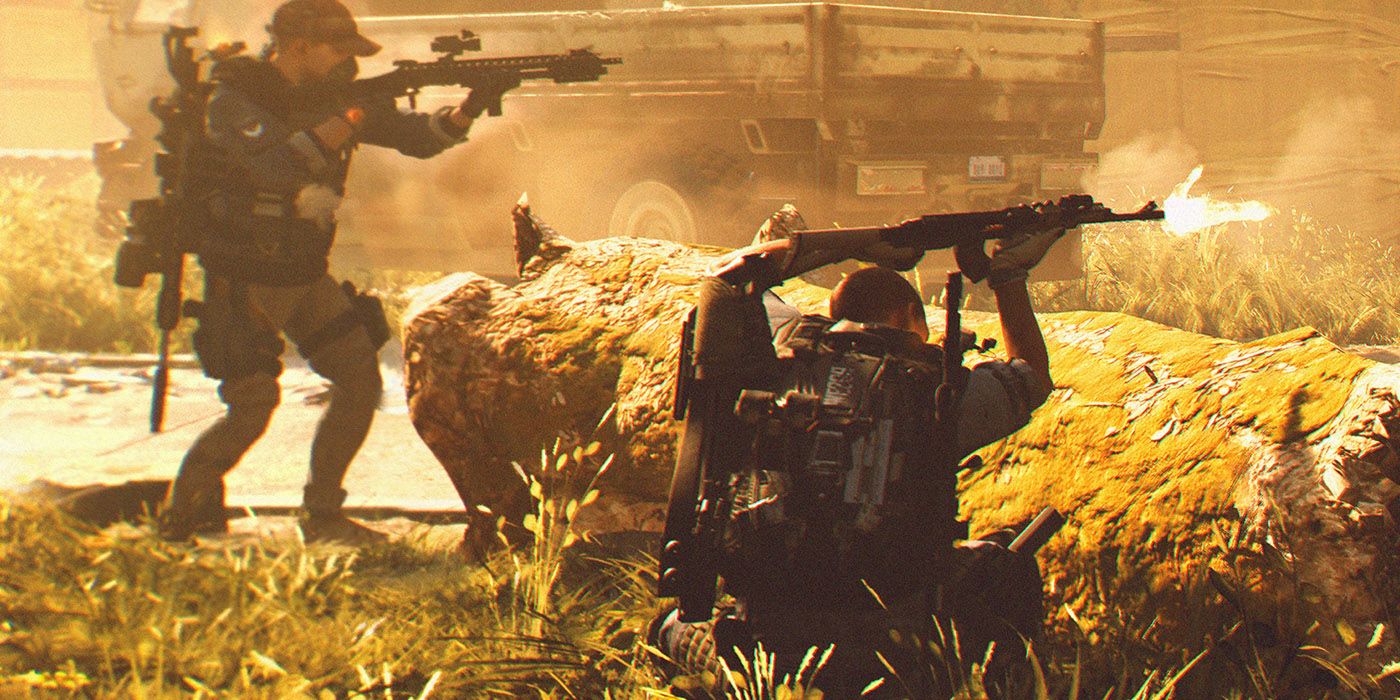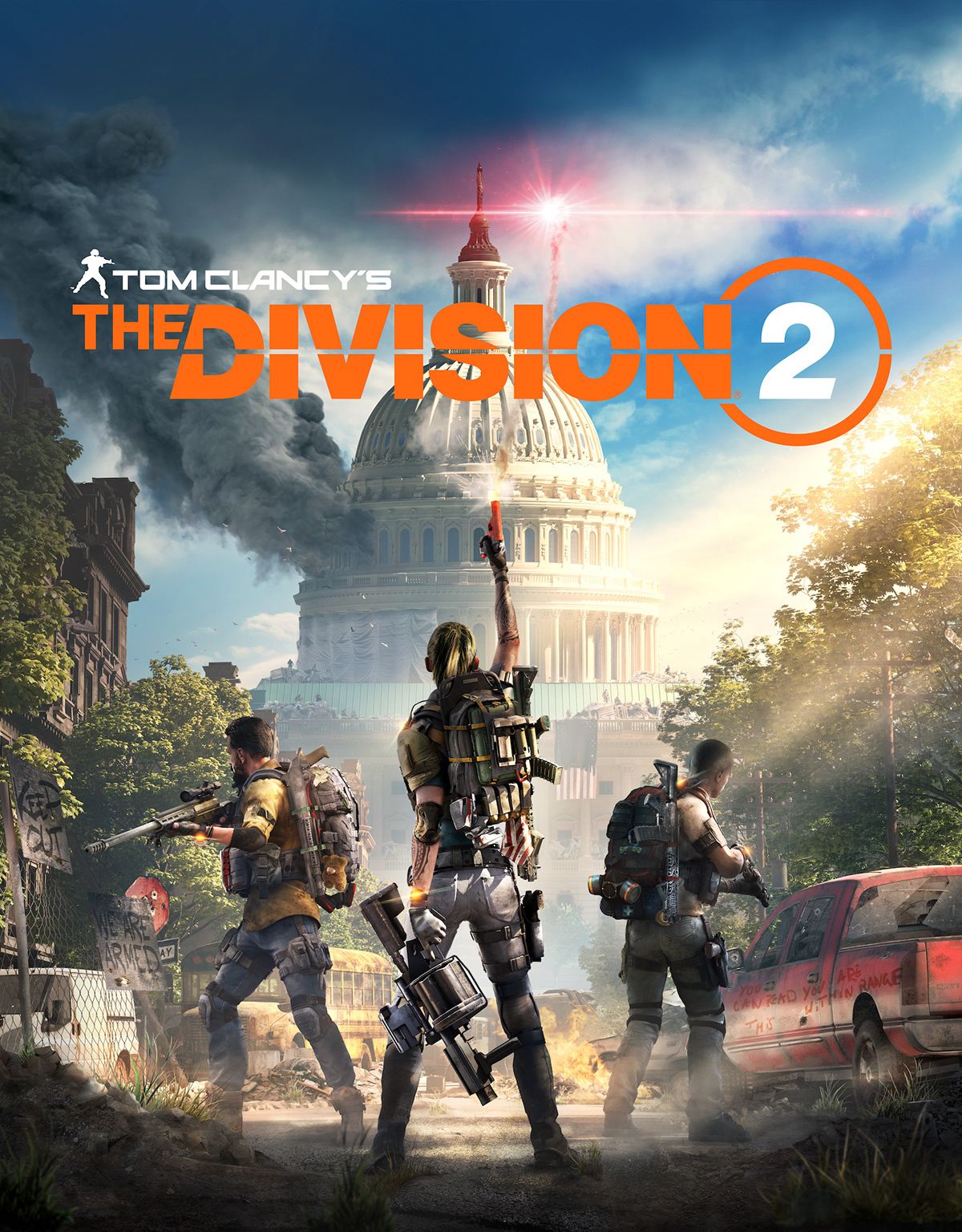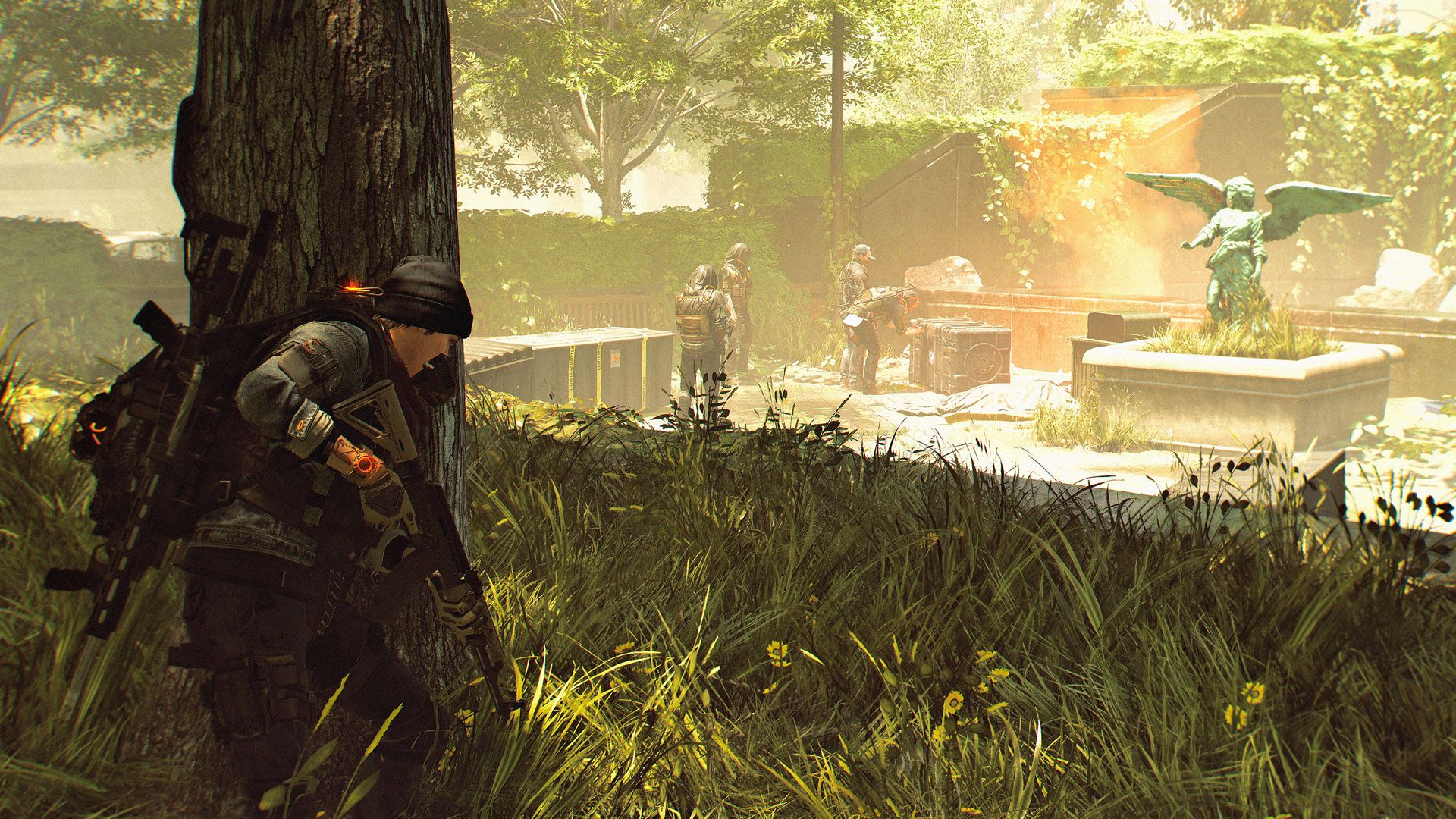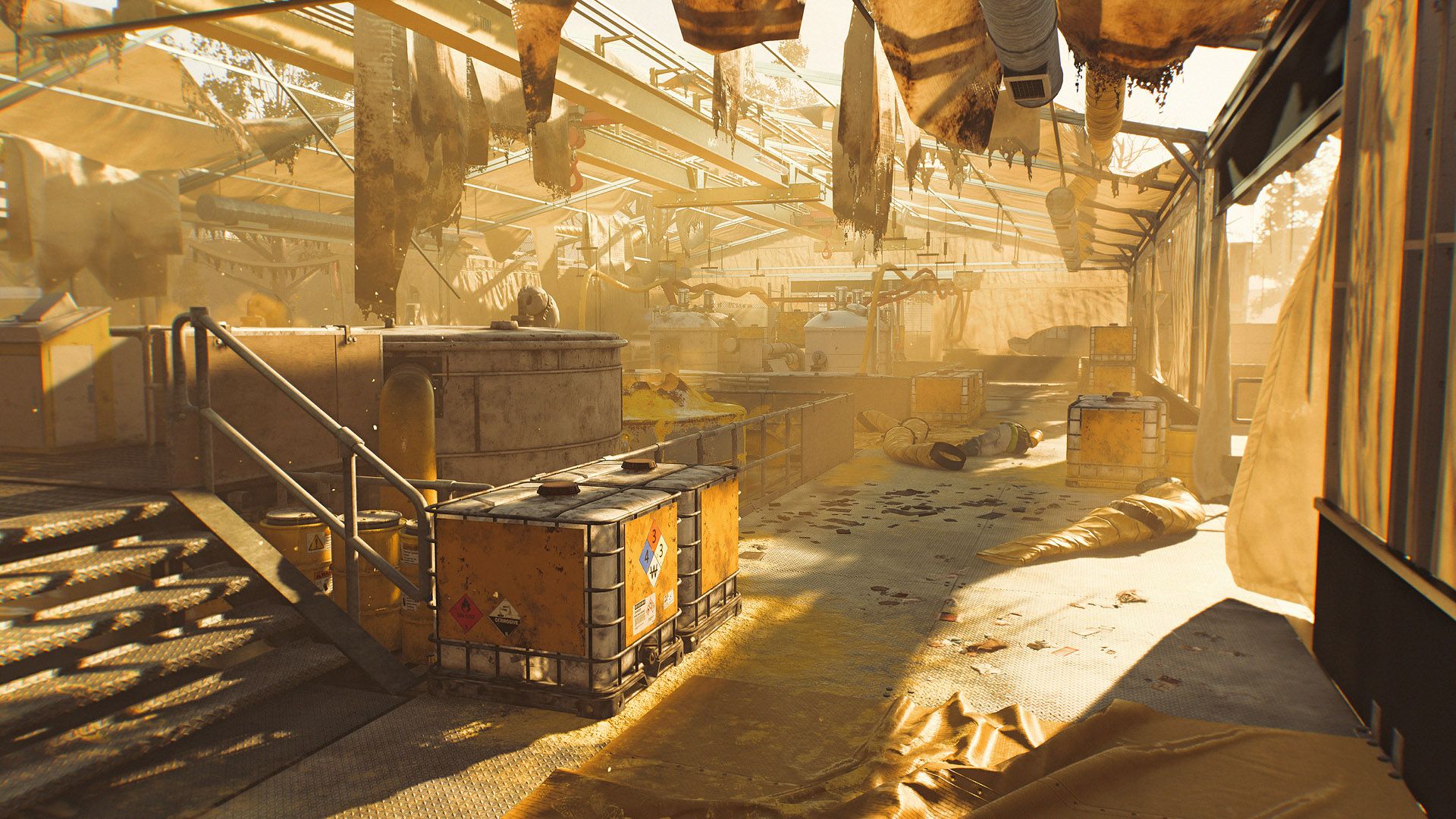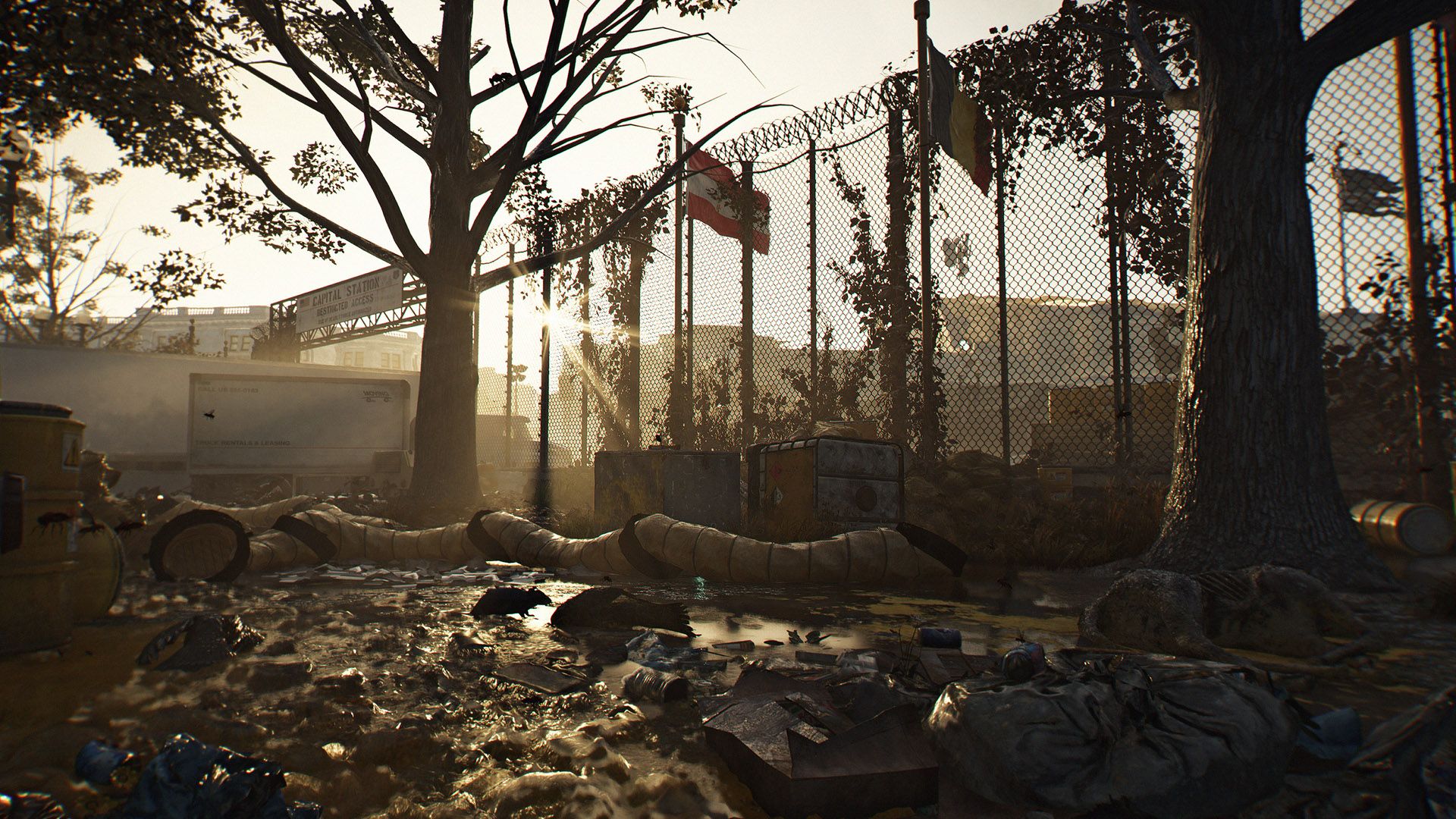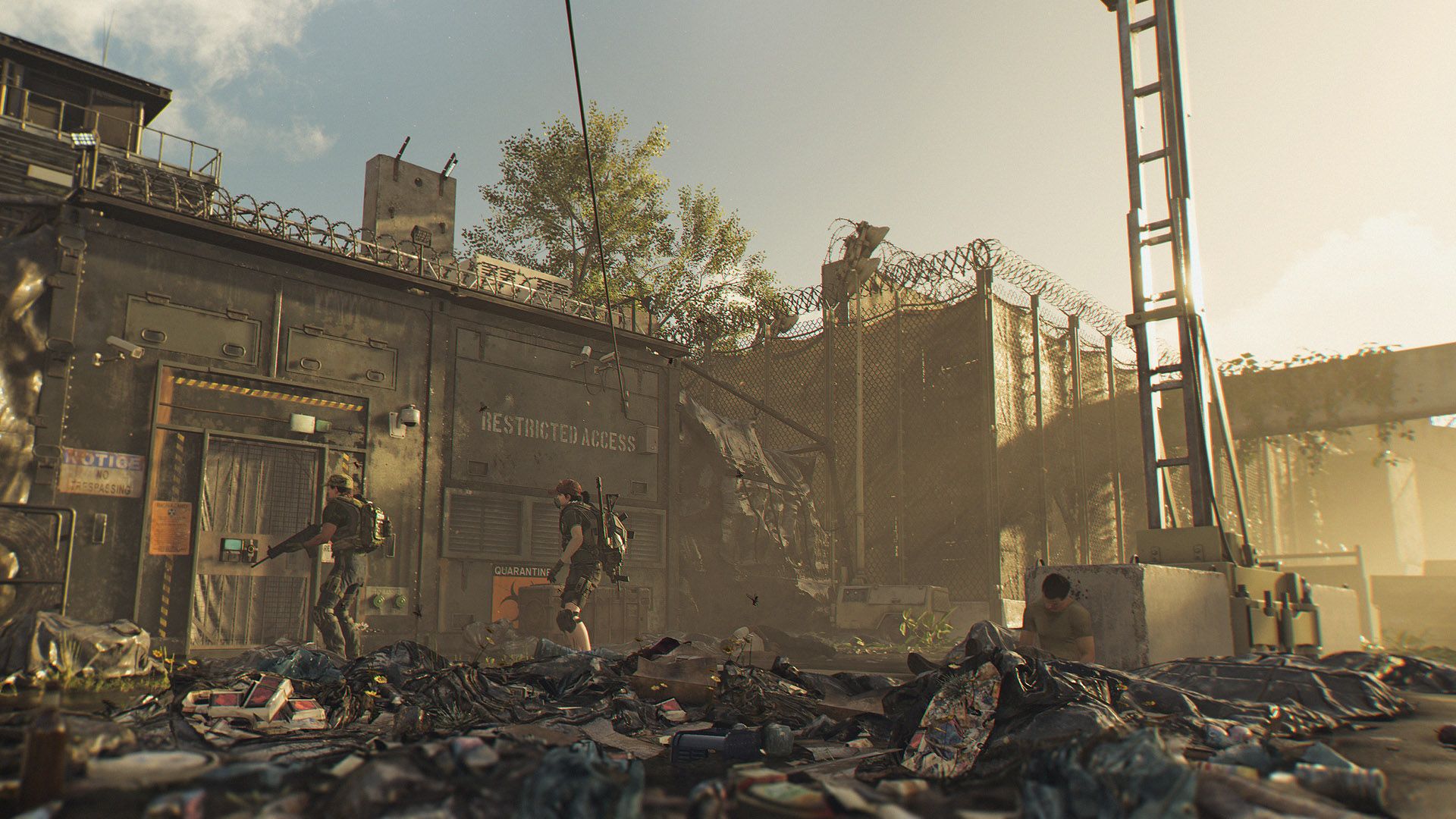We played five hours of Tom Clancy's The Division 2 last week at an event hosted by Ubisoft in San Francisco and after a pair of presentations about the game's open world and ambitious end game plans, we interviewed Julian Gerighty, Creative Director at Massive Entertainment.
The Division 2 is a followup to the hit new Ubisoft IP launched in early 2016 and is a single-player or co-op shooter, that also features PvP elements where players step into the combat boots of Federal Agents known as "The Division." The game takes place in an open-world version of Washington, DC after a catastrophic outbreak, that's chock full of linear story and side missions, and other dynamic events, and is played in third-person. It's a looter shooter where players progress and gear up not on their character and character skills, but their base of operations and other settlements. The goal is to help people, and thwart the nefarious plans of rival factions who each have their own unique agendas.
Related: Why The Division 2's Dark Zones Are Smaller And Feature Less Players
Gerighty worked on the first Division for two years before shifting to the sequel where the game's focus seems to be on making the core gameplay loop and world better in every way possible, with a special focus paid on the end game. The Division 2 takes advantage of all the additions the post-game updates that Division 1 added with many additive features thrown in.
Hi Julian, did you work on the first division?
Julian Gerighty: I did and on the live. So, it's been a continuous road for us.
How long have you been working with Massive?
Gerighty: Five years. So, two years to finish off The Division, three years since then for the live and Division 2.
The second presentation today focused on the end game plans for The Division 2. And the most telling slide was the one where you showed all this stuff added post-launch to The Division 2, and then on top of that, all the new additions we’re getting on top of that in the sequel. What's the one big thing you never got in the first game that you can finally bring in with The Division 2?
Gerighty: To be honest, I think we shipped The Division 1 without a clear idea of where we wanted to bring the endgame. So, it's only with 1.4, that came out a few months later, that things started fitting into place. So, with Division 2, we really wanted to fix that. Very early on, the brief to the team and the focus was endgame first. How can we make something that is super compelling? An end game that doesn't necessarily have to be a hardcore only experience. So, that's the one big thing.
Can you talk about the setting? Talking to Yannick earlier, he says the team talked about different cities then you landed on Washington pretty early. What made you choose that city?
Gerighty: There were several reasons. Again, Yannick probably went into this, but we had to construct a proposal to head office, Paris, with a rational study of different cities. And we looked at Seattle, New Orleans… New Orleans was, deep down, I felt super interesting. Very cool setting. Very, very different. But we started refining that Matrix of rational look at different cities and Washington DC ticked all of these boxes. It had the potential for new stories. It had a very different setup than New York City. As iconic as New York is, it simply doesn't have the variety of different areas that Washington DC does. So, those two things. It's a Clancy game, Washington DC is the capital. Just thinking about it, if this virus happened, if there's one city which would have held on, it would've been Washington DC. And just the fact that it didn't, is an interesting starting point. So, narrative, gameplay, flow, variety of environments, there's a lot of things that lined up for us.
In the first presentation today, you talked about The Division 2 taking place seven months later, and that the outbreak has spread across the U.S., but it's also spread across the world. So, are all major cities in the world in ruins, like Washington is?
Gerighty: We haven't really studied it. We've really done the sort of timeline for New York and Washington, but we haven't fleshed out a timeline for the world. I do know, in my mind, and this is nowhere in lore, it's everywhere. So, London, Paris, Tokyo, then maybe an island somewhere that doesn't. And like that becomes a safe haven. But the major cities in my mind are all affected.
So, The Division went from this Federal Agency and now potentially, it could become international. It may need to, right?
Gerighty: Again, I don't want to paint the franchise into a plan. For me, in the lore, it is a U.S. based last line of defense for the U.S.. But I've always imagined Division Agents as much more than that. The people, when there’s a disaster or an accident, who selflessly go towards the danger and don't run away from it. That's the spirit that we want to capture. It's that heroism that we're looking at. It's modern day superheros. You don't need to wear a costume to actually stand up for unity, for all of the things that mean that we're humans. So, it's really that spirit of “it could be you.” It's relatable. It could be you. If this happens, what would you be doing? Would you be joining a faction? Would you be sheltering yourself or just protecting your family? Or would you be going out there and trying to rebuild?
We got to experience two missions from The Division 2's end game, which is incredibly fun and super hectic and intense. What I like about it though is every drop is like purple or yellow, like you're always getting significant rewards. With the dark zone PvP, how do you balance the high-level weapons between PvE and PvP?
Gerighty: It's not easy. There's a specific balancing for each one. Very few games do seamless PvE / PvP with the same character. A lot of other games offer separate progressions. But, Dark Zone, what we presented, I don't know if you were at the dark zone event?
No, I didn't go.
Gerighty: What I love about what we've done with the dark zone is that we really strive to make it much more fair experience for everybody. Which means we have normalization. And normalization, basically, all it means is that your gear choices still matter. The equipment still matters. But we’re squishing the peaks and the troughs of the differences between players. And that creates a moment where it's all about skill. And that's essential for that balance basically. And organized PVP is going to be the same sort of thing too.
The commitment here is with post-launch content, keeping the end game and live service active. What does that mean for the cadence of, not just updates, but actual content releases. Is there a certain schedule of when you plan?
Gerighty: Ideally, in my mind, it's every three months. But, in actual fact, it's whenever it's done. Whenever we feel that it's good enough to be released. As you're saying, there's a lot of balancing to go in. There's a lot of fine tuning of what the experience actually is. So, if we don't feel that it's ready, or if we feel that it's going to change them meta in a way that we're not comfortable with, we won't release it.
The first game obviously evolved a ton post-launch in this game and you've talked about similar support for The Division 2. How does that affect the management and the resources of the Dev teams - between the focus on adding to this game, getting bigger and bigger, and whether they can work on other projects in the future? How much of a balancing act is that?
Gerighty: That's more of a production, like organization focus. I do know that the teams that are working on The Division today, and that's Massive, it's Red Storm, it's Ubisoft Reflections in Newcastle in England, etc. They're all committed to the project in the long term. So, I don't think there’s going be wrenches in the system. I think it’s a robust enough system now, after five, six, seven years of developing The Division, that we've kind of got it now.
This hybrid genre of open-world shooter RPGs has more games in that market now. Do you guys pay a lot of attention to that and take learnings from each other? Any inspirations from that?
Gerighty: I play a lot of games. But really, I see them as experiences that are complimentary. So, I can only really talk about The Division. Creatively, what we want to do with The Division-- I do know that we're very, very different from most other games. We have a realistic setting. It's credible, it's contemporary, it's an open world, contiguous space. So, there are a lot, a lot of differences.
One of the changes I like to noticed right away in the The Division 2 is how mods are different. Players unlock them and they just become available for all the weapons. What was the reasoning behind that change?
Gerighty: I think it was to help with balancing. It was to make it a more democratic, give you more choices quicker. I think it makes more sense. So, it's a big change but I think it's a change for the better. For that spirit of allowing you to really craft a build that suits your play style without necessarily going out of the way to look for exactly what you want.
My last big question then. What are you most excited for players to see for The Division 2 when it comes out?
Gerighty: For me, and this isn't a PR response, but what excites me is the creation of the world. It's going and doing research trips in these places that are iconic. Building them, finding clever ways and production efficient ways to build them. And then destroying it. And then transforming them completely and creating a natural history of, “Okay, what happened here? How was this transformed? How did the capital go down? How was it taken over?” And creating those stories and creating the environmental storytelling there. It's not a gameplay answer...
Okay, I’m going to ask another question then because that interests me the most. Because The Division 2 is in the capital, seeing these famous landmarks and historical buildings where all these world leaders were. They're gone. And obviously the environments are regrowing. There's overgrowth and wild animals and stuff. How much lore will be offered about what happened to the American leadership?
Gerighty: Every building that we used has a timeline, that we have in a big world bible. We know exactly what happened between Christmas, Black Friday, and the seven months that go past. In terms of the stories about the power structure, of course you're going to be falling on audio logs that will tell you their stories. Creating stories for a shared-world-shooter like this that's nonlinear, open world, you can go anywhere, it's tough. So, we really lean into the collectible aspects of things to tell those stories. The environment, and the stories we can tell with the environment.
More: Read Our Other Division 2 interview with Yannick Banchereau, Live Content Manager
Tom Clancy's The Division 2 releases for PC, PlayStation 4 and Xbox One on March 15, 2019.

